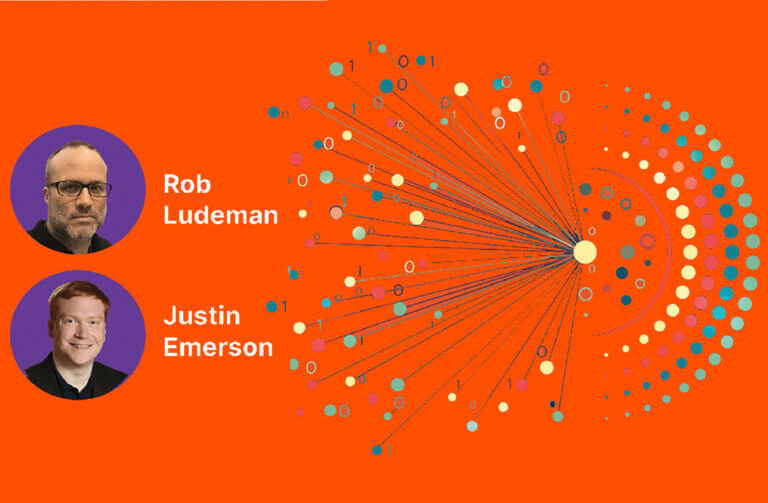For years, businesses across industries have been working to transform digitally and become more data driven so they can avoid falling behind in Industry 4.0. What many have learned through that journey is that they have massive amounts of critical data to tap for insights—more than they ever realized and growing in volume by the day. They’ve also discovered that IT infrastructure decisions they’ve made in the past, including for data storage solutions, are now hindering their ability to make all that valuable data available, accessible, and useful to the business.
Findings from a recent IDC survey suggest that storage infrastructure and other IT constraints will become even more problematic for organizations—and soon. In the survey, 78% of IT decision-makers said they expect the volume of data in their organization to increase over the next two years, while 68% anticipate the velocity of data will rise during that same period¹. And 69% of the decision-makers IDC surveyed reported that they expect to see the variety of data increase as well².
“Modern Data Pipelines for Faster Time to Insights,” a new white paper from IDC, examines why the type of storage your business uses for data analytics- and artificial intelligence (AI)-driven workloads is foundational to how quickly you can mine data for insights—and how easily you can provision for growing petabytes of data. That includes unstructured data, which will represent the lion’s share of new data coming into organizations and will fuel most of the new applications that businesses are deploying as part of their ongoing digital transformation, according to separate research from IDC³.
Rethinking Data Infrastructure to Simplify Analytics Workloads and Reduce Barriers to Insights
The IDC white paper on modern data pipelines, which Pure Storage sponsored, explains that modern analytics and AI applications coupled with new and diverse sources of data are already forming the basis of competitive advantage for businesses. But to take things to the next level and stand apart as true leaders in the digital economy, organizations need to unlock the value of their data in real time, according to IDC.
That requires investments in high-performance data architectures—but with a different approach than they’ve used in the past. IDC explains that instead of implementing point solutions for individual analytics workloads, which can lead to complexity in data-heavy environments, organizations need to invest in data infrastructure that consolidates workloads. That will help them to simplify their analytics workflows while reducing barriers to data sharing and time to insights.
IDC also emphasizes that businesses seeking real-time intelligence from their data need to enable a modern data environment that supports “in-place analytics.” (In-place analytics refers to the practice of performing data analysis and computations directly within the same environment or platform where the data is stored, rather than moving the data to a separate analytics or processing system.) IDC says that creating that environment and becoming a truly data-driven enterprise includes, among other steps:
- Infusing data analytics platforms with high-performance technologies to optimize application performance for large data sets
- Establishing an appropriate data persistence layer that can support the storing, securing, and fast access of rapidly changing data sets
- Enabling independent scaling of appropriately tuned compute capacity and storage capacity that supports multiple access methods and protocols to consolidate workloads and data
Creating the Infrastructure for Modern Data Pipelines—with Help from Pure Storage
In the “Modern Data Pipelines” white paper, IDC notes that “data is the fuel for digital-first enterprises” and that the key to unlocking critical insights from all that data is, of course, data analytics. However, legacy approaches to storing analytics data can limit organizations’ flexibility and agility, IDC says.
To build the modern data analytics environment their organizations need to be data driven, agile, and flexible in Industry 4.0, IT decision-makers need to select a storage infrastructure partner that can provide solutions based on best-in-class technologies. IDC indicates that this is a fundamental step toward simplifying data storage and creating an infrastructure with a suitable data persistence layer that will enable faster and better business decision-making.
One storage infrastructure partner to consider is Pure Storage—and IDC highlights the fact that Pure Storage offers a portfolio of solutions based on products that are purpose-built for high-performance analytics workloads. IDC also explains that businesses can use:
- Pure Storage® FlashBlade//S™ to gain a consolidated storage platform for both file and object workloads. FlashBlade//S is designed specifically to simplify deployment, management, and end-user experiences for modern data analytics environments.
- Pure Storage Evergreen® to receive non-disruptive upgrades for storage software, controllers, networking, and media. That means ITOps teams have more time to focus on strategic initiatives.
To get more details on what type of infrastructure is needed to support modern analytics pipelines, and to learn more about what to look for in a storage vendor that can support your Industry 4.0 data analytics objectives, download the free white paper, “Modern Data Pipelines for Faster Time to Insights.”






